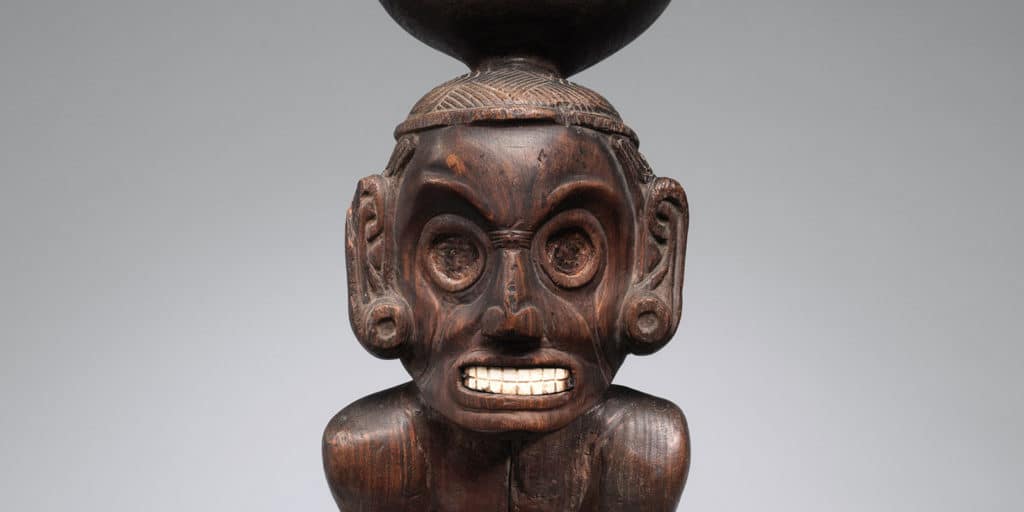Arte del mar: Artistic Exchange in the Caribbean is at the Metropolitan Museum of Art in Central Park, December 16, 2019 – June 27, 2021. There is a great companion exhibition online at metmuseum.org
Arte del mar: Artistic Exchange in the Caribbean
The is the Met’s first exhibition to see the Caribbean as something all its own. The Bahamas, eastern Cuba, Haiti, Dominican Republic and Puerto Rico were Taíno lands. The Lesser Antilles were Carib. This is the heritage of so many New Yorkers.
The exhibition is of sacred objects made from wood, stone and gold. There are many beautiful Zemís, including some that are iconic. You see copies of these works all over Puerto Rico. It’s exciting to see the originals.
The Zémi Cohoba Stand is outstanding. We’ve never seen anything like that in the Caribbean.
You’ve Never Seen Caribbean Art Like This
One of the exhibition’s surprises is the gold works. They are based on Caribbean themes, but remind you of the incredible gold work of the pre-contact Colombians. Colombia has Caribbean coastline and culture too.
There are jadeite pendants that suggest Mayan influence. One of the surprises of Puerto Rico is ball courts in Taíno ceremonial places which suggest Mayan ball courts. We don’t know if it is true, but Puerto Ricans tell us that the Taíno contacted the Mayans for help fighting the Spanish colonizers.
Arte del Mar Influenced Modern Art
The Met includes a painting by the famous Cuban modern artist Wilfredo Lam (1902-1982). He was inspired by Afro-Cuban and Indigenous culture. Lam was Cuban, but he was the son of a Chinese immigrant and a Cuban mother who was Kongo descent. His inspiration from sacred objects like those in the show is beautifully obvious.
Most New York Caribbeans speak of our West African heritage from the Yoruba and Dahomey cultures, but in the Caribbean we keep encountering Kongo artists too. That’s Central Africa in modern Angola and the Democratic Republic of Congo. There must have a lot more mixing than we understand today.
Colonizers have taught us a bunch of nonsense. There was nothing primitive about the people who made these objects. They show a high degree of technical sophistication, a rich cosmology, and the societies that produced art like this, had to be large and successful.
Go see the exhibition if you can. In the European context, art is just art or something you hang over your sofa. In the Indigenous Caribbean context, these sacred objects have had life breathed into them. They are living spirits. Go be with our ancestors at the Metropolitan Museum of Art.

